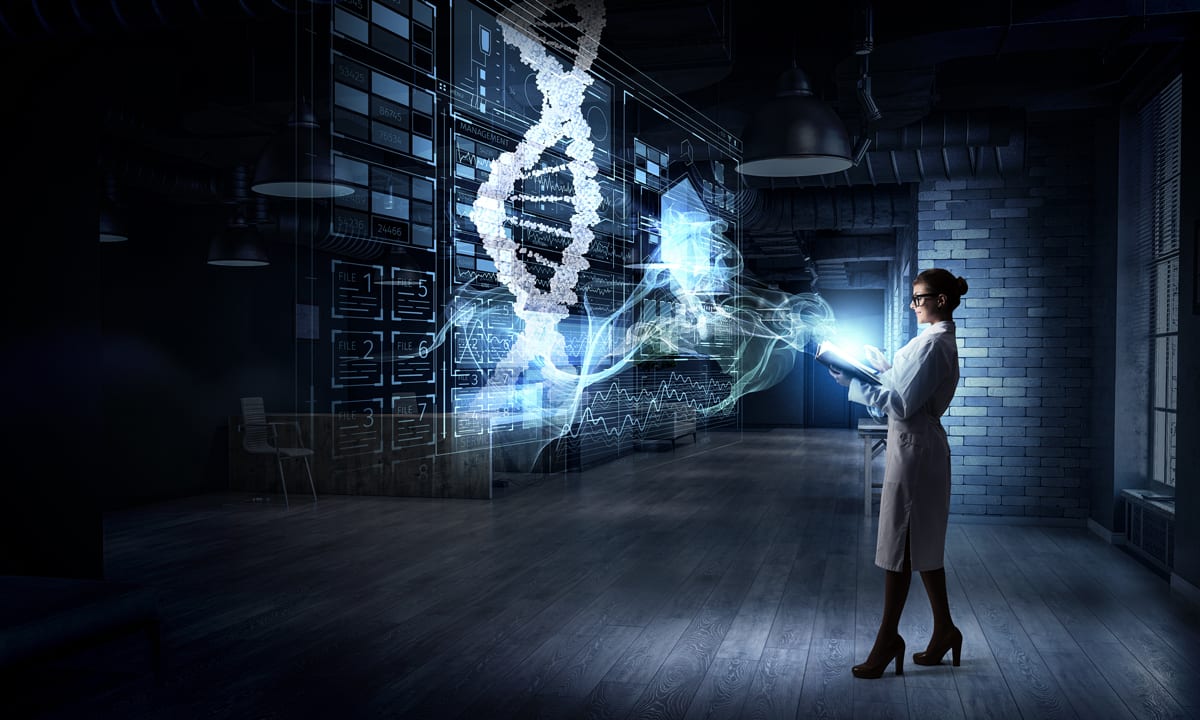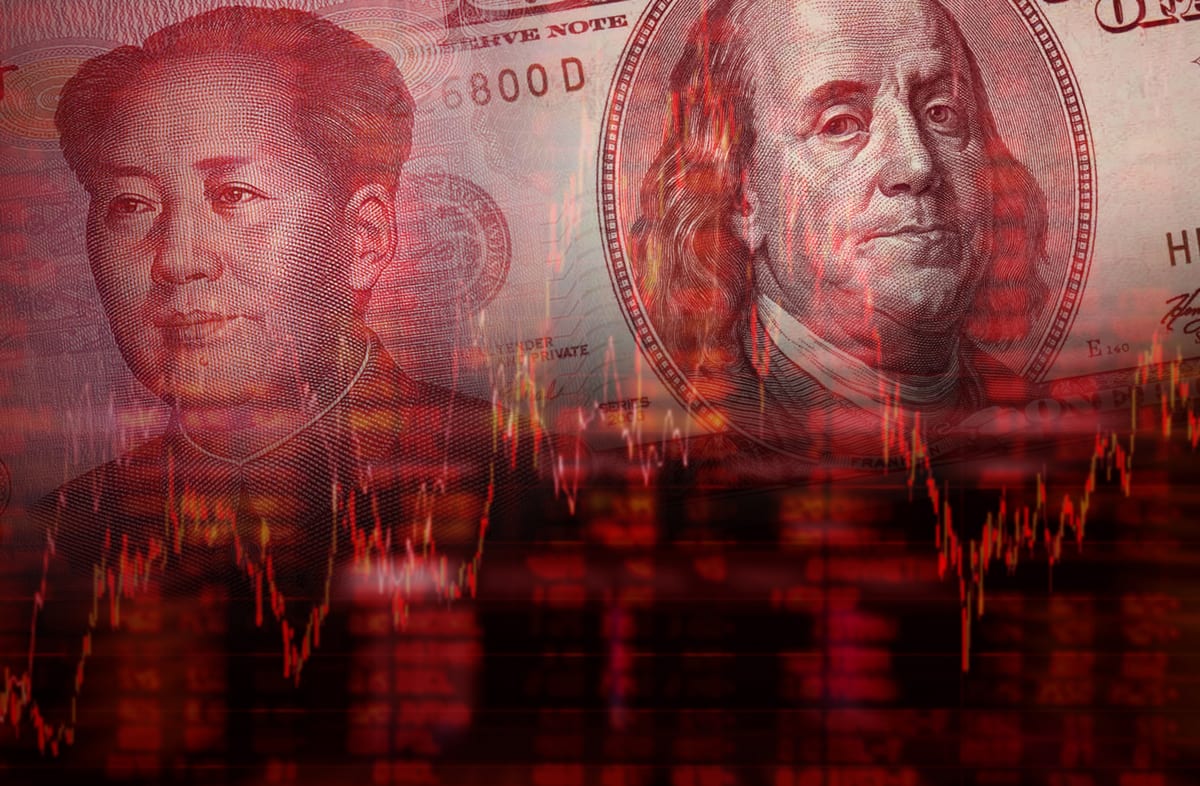The Computer That Will Transform the World is Already Here
The University of Manchester has unveiled a new form of computer that could change the world more profoundly than the advent of the Internet, mobile phones, or nuclear power.
A team headed by Professor Ross D. King revealed in March a super fast form of computer that “grows as it computes.”
It sounds bizarre, but the Manchester team turned strands of DNA into the basis of a computing and data storage system.
The new system has the potential to be exponentially faster than modern electronic computers, and even faster than the quantum computers that are only now hitting the market.
The reason is that, unlike electronic computers, DNA -based computers can work on two answers at the same time.
“Imagine a computer is searching a maze and comes to a choice point, one path leading left, the other right,” explained Professor King, from Manchester’s School of Computer Science. “Electronic computers need to choose which path to follow first.
“But our new computer doesn’t need to choose, for it can replicate itself and follow both paths at the same time, thus finding the answer faster.”
The other form of computing that is currently revolutionizing the industry is the Quantum computer.
Ordinary computers calculate using binary code, so each unit of data, or ‘bit’ is either a 1 or a 0.
Quantum computers use Qbits, which can be 1 and 0 at the same time, through the bizarre and fuzzy math of quantum mechanics.
The reason that’s so powerful is that when classic computers consider one option against another option, they must consider them separately. Quantum computers consider all options simultaneously to come up with the answer, and are therefore exponentially faster and more powerful.
So, how could any computing system be faster than a Quantum computer?
As King explained in March, DNA computers can out-perform Quantum computers because they can literally ‘grow’ as they compute.
“This ‘magical’ property is possible because the computer’s processors are made of DNA rather than silicon chips,” King says. “All electronic computers have a fixed number of chips. Our computer’s ability to grow as it computes makes it faster than any other form of computer, and enables the solution of many computational problems previously considered impossible.”
HOW FAST IS FAST?
So, how fast are we talking?
The answer, for anyone who understands even the basic concepts of computing, will blow your mind.
DNA molecules are incredibly small, but they hold a staggering amount of information.
Consider, for example, that DNA molecules contain all of the information required to construct any plant or animal on earth, including all human beings.
Because DNA molecules are so small, a desktop-sized computer could potentially use more DNA computer ‘processors’ than all of the electronic computers in the world combined.
Such a computer would make the world’s most advanced supercomputers of today look like a pocket calculator from the 1980s.
For the true geek, put it in these terms: A modern and very high-end personal computer today can store and work with a few terabytes of data, while a DNA computer could work with 100 billion terabytes, and all of that storage would be contained in a single gram of DNA.
WHAT’S THE CATCH?
Before you run down to Best Buy and shop for the latest DNA computer, realize this research and development is at a very early stage.
The successful test of this new type of computing is indeed an historical event … but a practical computer that can be used by companies or individuals is still a long way off.
At the current time coding a single megabyte of data into DNA costs about $12,500 USD.
But as with any technology, costs come down very quickly as researchers and then industry begin scaling up the machines.
DNA is the most reliable method known for storing information … and must be, to ensure that when it produces a mosquito or a human baby, the resulting ‘product’ is created without crippling errors and mutations.
A good example is the sequencing of genomes.
The ability to sequence the entire genome of a living organism was technically impossible not long ago, and when sequencing was developed it cost a staggering $2.7 billion to sequence the genome of a living organism.
Now, that cost has dropped to less than $1,000 … in some cases as low as $280!
The cost barrier in DNA computing is very similar. Now that researchers understand how to store data and calculate problems with a DNA computer, the main issue is increasing the efficiency and bringing down the cost.
And that is really just a question of when, not if.
HOW WE GOT HERE, AND WHERE WE’RE GOING
What the University of Manchester team did that was new was to introduce the concept of DNA computing, but DNA data storage had already been developed.
Even that is fairly new and too expensive to be practical, but in 2012 scientist George Church whimsically stored 70 billion copies of his book ‘Regenesis: How Synthetic Biology Will Reinvent Nature and Ourselves in DNA’ on strands of DNA the size of your thumbnail.
That’s so much data, it would take many lifetimes to read it.
That happened in 2012, and was at the time the most efficient use of DNA for data storage.
Now, DNA storage and computing is moving out of university labs and into corporate development centres.
Last year Microsoft purchased ten billion strands of DNA from Twist BioScience to experiment with data storage.
Twist BioScience is a San Francisco-based startup that developed a process to create synthetic DNA at reduced cost and scale for data storage.
Microsoft and Twist both say storing data on DNA is far more reliable and stable than storing data on a silicon chip.
“Today, the vast majority of digital data is stored on media that has a finite shelf life and periodically needs to be re-encoded. DNA is a promising storage media, as it has a known shelf life of several thousand years, offers a permanent storage format and can be read for continuously decreasing costs,” says Twist CEO Emily Leproust.
“Our silicon-based DNA synthesis platform offers unmatched scale and product quality that vastly accelerates the ability to write DNA at a cost enabling data storage.”
Microsoft’s senior researcher Doug Carmean says the new technology is the future of computing and data storage: “We’re still years away from a commercially- viable product, but our early tests with Twist demonstrate that in the future we’ll be able to substantially increase the density and durability of data storage.”
THE UNLIMITED POTENTIAL OF DNA COMPUTING
While DNA computing is in its infancy, the potential is there for everyone to see.
Today, developments in Artificial Intelligence and Intelligence Augmentation are also beginning to take off.
Developers are building computers that are capable of learning, and believe a truly intelligent computer or robot could exist within the next decade.
At the same time, developers like Tesla’s Elon Musk are developing ways to greatly augment human intelligence by augmenting the brain with linked computers.
For example, Musk is developing a ‘neural lace’ that is inserted through the jugular vein, and then unfolds to create a neural interface between the mind and a computer.
Right now these technologies are being built with silicon-based electronic computers.
If they were constructed using a DNA computer, an enhanced human could literally carry and access all of the information currently stored on the Internet, in strands of DNA the size of a Canadian quarter.
Enhanced humans, or artificially intelligent computers, would be able to instantly compute complex mathematical equations, speak multiple foreign languages, or analyze advanced chemical compounds in seconds.
The average non-enhanced human would be about as smart as a house cat in comparison.
In short, the development of DNA computing – combined with advances in nanotechnology – will change the world in ways we can’t even comprehend today.
By Gary Symons, Equedia













Thanks for those insights – they are breathtaking but leave me with an uneasy feeling that we are losing control of our future.
Are we though? – unfortunately for the geeks and visionaries we are immersed in a biological soup that has its own terms of reference and brutal reality.
The question might be is our science compatible with our existence and that of the Universe we inhabit?
I guess we will find out sooner than later just like all the failed super successful life forms before us.